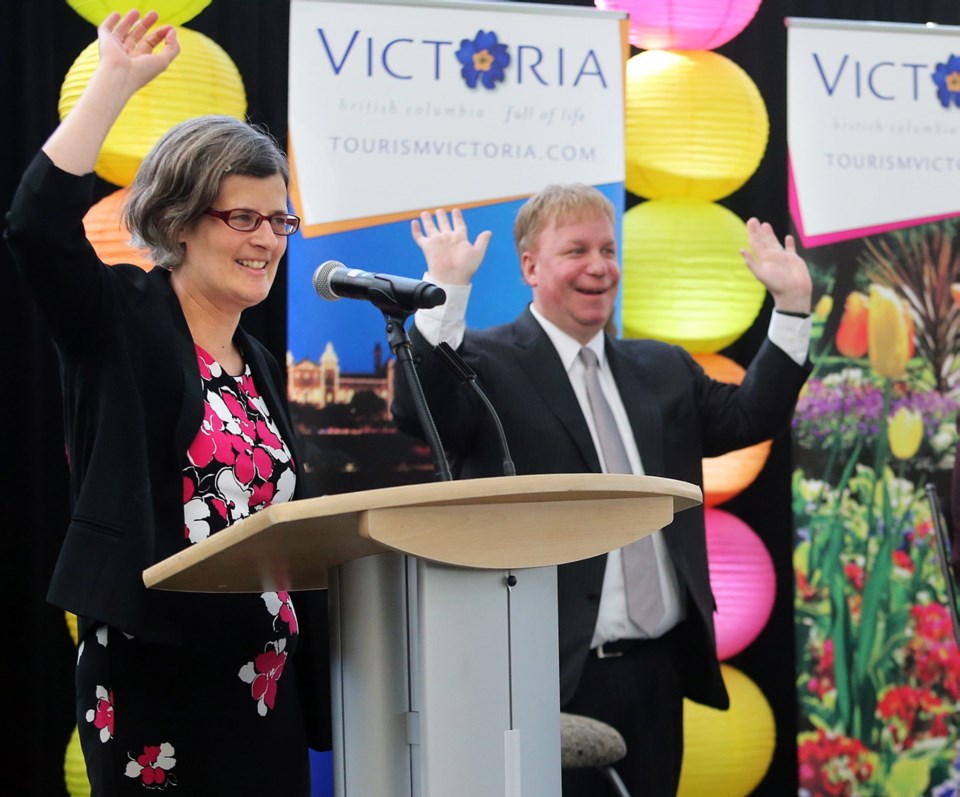Tourism Victoria is moving closer to a new planning regime aimed at bolstering regional marketing programs and partnerships.
The framework is part of a multipronged initiative to increase Tourism Victoria’s competitive edge in a sector that is growing internationally. It is also anticipated to bring in about $1 million more annually to promote Greater Victoria.
“This is a historic moment,” Victoria Mayor Lisa Helps said Monday at an announcement at the Inner Harbour attended by about 100 members of the tourism sector.
One facet of the plan will see Tourism Victoria take over sales and marketing for the Victoria Conference Centre. It will not operate the conference centre. This move is designed to avoid duplication of effort and costs, while creating a consistent marketing approach.
Victoria’s destination marketing organization is operated through Tourism Victoria.
Tourism Victoria is also donating $1 million over 11 years toward building the David Foster Harbour Pathway, which is being integrated into the continuing plans to upgrade the Belleville Street Terminal.
Helps is hoping that the combination of city and Tourism Victoria contributions to the pathway and terminal will spur support from the federal and provincial governments.
Further, Tourism Victoria is asking for approval from the province to boost the hotel tax to three per cent from two per cent.
The province announced a year ago that it would permit municipalities to increase the hotel tax, dedicated to destination marketing. Vancouver implemented a three per cent tax in September.
Paul Nursey, president and chief executive officer of Tourism Victoria, said the $1 million will be found through increased efficiencies and anticipated business growth. “We do feel [that] over time we are on a growth trajectory, so we are comfortable enough to make this arrangement.”
Tourism Victoria receives $2.68 million annually from the hotel tax. An additional one per cent voluntary destination marketing fee, collected by 22 hotels, delivers about $880,000 per year.
As part of the new program, the province is being asked to allow Tourism Victoria to renew its funding formula with Victoria every five years, instead of annually.
Most such organizations in B.C. are already operating under a five-year system.
A lot of time is spent preparing for the annual funding request to the city that could be better spent on marketing, Tourism Victoria said.
A five-year time frame “provides much more certainty and predictability,” in planning, Nursey said.
Catherine Holt, chief executive officer of the Greater Victoria Chamber of Commerce, praised the overall plan and the collaboration among participants.
“Everyone has their own role to play, but it is all about making Victoria a much better place, and I think this is a big step in that direction,” Holt said.



